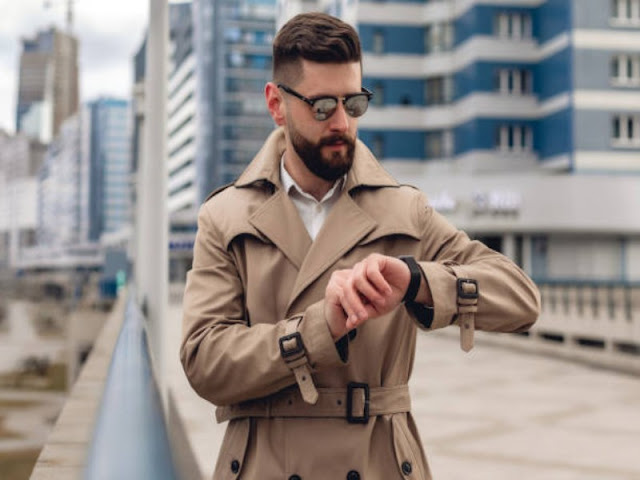Featured
- Get link
- X
- Other Apps
The Business of Fashion

Marketing and Branding Strategies
In the highly competitive world of fashion, marketing and
branding are crucial elements for the success of any fashion company. Effective
marketing and branding strategies not only help these companies establish a
presence in the market but also maintain their relevance and desirability. In
this article, we will discuss the key marketing and branding techniques
employed by fashion companies to navigate the dynamic landscape of the fashion
industry.
Building a Strong Brand Identity:
- Brand
Storytelling: Fashion brands often create compelling narratives to
establish a unique identity and connect with consumers. Whether it's the
history of the brand, the founder's story, or a particular inspiration,
storytelling humanizes the brand and makes it relatable.
- Brand
Values: Defining and promoting core values is crucial. Brands that
champion sustainability, inclusivity, or social responsibility often
resonate with consumers who share these values. These values guide brand
decisions and help build a loyal customer base.
- Logo
and Visual Identity: A memorable logo and consistent visual identity,
including color schemes and design elements, are vital in creating brand
recognition. These elements should be used consistently across all brand
materials, from labels to social media.
Targeted Marketing and Consumer Segmentation:
- Understanding
the Audience: Effective marketing begins with a deep understanding of
the target audience. Brands research demographics, psychographics, and
behaviors to create a consumer profile. This knowledge informs everything
from product design to advertising strategies.
- Segmentation:
Brands often segment their audience into distinct groups with shared
characteristics. This allows for tailored marketing strategies. For
example, a high-end fashion brand might segment its audience into luxury
shoppers, while a streetwear brand might target a younger urban audience.
- Influencer
Collaborations: Influencer marketing is a popular technique to reach
specific consumer segments. Brands collaborate with influencers whose
followers align with their target audience, allowing them to tap into
established communities.
Omni-Channel Marketing:
- E-commerce:
The rise of e-commerce has transformed the fashion industry. Many brands
maintain an online presence to reach a global audience, sell products
directly to consumers, and gather valuable data on consumer behavior.
- Social
Media: Fashion brands are active on various social media platforms to
engage with consumers, showcase their products, and create a community
around their brand. Instagram, Pinterest, and TikTok are particularly
popular for visual marketing.
- Content
Marketing: Content, such as blog posts, videos, and podcasts, can
provide valuable information and entertainment to consumers. Brands create
content that resonates with their audience, establishing themselves as
industry experts and thought leaders.
Innovative Marketing Campaigns:
- Sustainable
Initiatives: Brands that prioritize sustainability often use it as a
key marketing message. Sustainable practices, such as using eco-friendly
materials or ethical production processes, can be highlighted in
campaigns, appealing to environmentally conscious consumers.
- Collaborations:
Collaborations with other brands, artists, or designers can generate
excitement and broaden a brand's reach. Limited-edition collections
created through collaborations create a sense of exclusivity and urgency.
- Fashion
Shows and Events: Fashion shows and events provide opportunities to
create buzz around new collections. These events are often covered by the
media and can be livestreamed to engage a global audience.
Storytelling Through Visuals:
- Photography
and Videography: High-quality visuals are essential for fashion
brands. Professional photography and videography are used for lookbooks,
advertising campaigns, and social media content. These visuals evoke
emotions and tell a story about the brand and its products.
- Fashion
Films: Some fashion brands produce short films to showcase their
collections and tell a narrative. These films often have a cinematic
quality and can engage audiences on a deeper level.
- Visual
Consistency: Consistency in visuals across all marketing materials is
crucial. It reinforces the brand's identity and creates a recognizable
style.
Consumer Engagement and Interaction:
- User-Generated
Content: Encouraging consumers to create content related to the brand
or its products, such as through hashtags or challenges, can increase
engagement and create a sense of community.
- Customer
Reviews and Testimonials: Positive reviews and testimonials build
trust with potential customers. Brands often display reviews on their
websites and social media.
- Feedback
and Personalization: Collecting feedback from customers allows brands
to continually improve their products and services. Personalization, such
as customized recommendations, enhances the consumer experience.
Global Expansion and Localization:
- Market
Research: Brands conduct thorough market research when expanding
globally to understand cultural differences and consumer preferences. This
informs marketing strategies tailored to each region.
- Localization:
Localization involves adapting marketing materials, such as language,
imagery, and cultural references, to resonate with local audiences. This
makes the brand feel more relatable and relevant.
Measuring and Analyzing Performance:
- Data
Analytics: Data-driven marketing is essential for tracking the
performance of marketing campaigns. Brands analyze metrics such as website
traffic, conversion rates, and social media engagement to evaluate their
strategies.
- A/B
Testing: A/B testing involves creating variations of marketing
materials and measuring their performance to determine the most effective
strategies.
- Key
Performance Indicators (KPIs): Brands establish KPIs to assess the
success of marketing campaigns. These may include metrics like return on
investment (ROI), customer acquisition cost (CAC), and customer lifetime
value (CLV).
Adaptability and Trends:
Fashion brands must stay attuned to changing trends and consumer behaviors. Adapting to shifts in the market, such as the rise of sustainability or the growth of e-commerce, is essential for maintaining relevance.
Conclusion
The business of fashion relies heavily on
effective marketing and branding strategies. These techniques help fashion
companies establish a unique identity, reach their target audience, and
maintain their presence in the market. Whether it's through brand storytelling,
omni-channel marketing, innovative campaigns, or consumer engagement, fashion
brands must continuously evolve and adapt to meet the changing demands and
preferences of consumers while remaining true to their core values and identity.
- Get link
- X
- Other Apps

